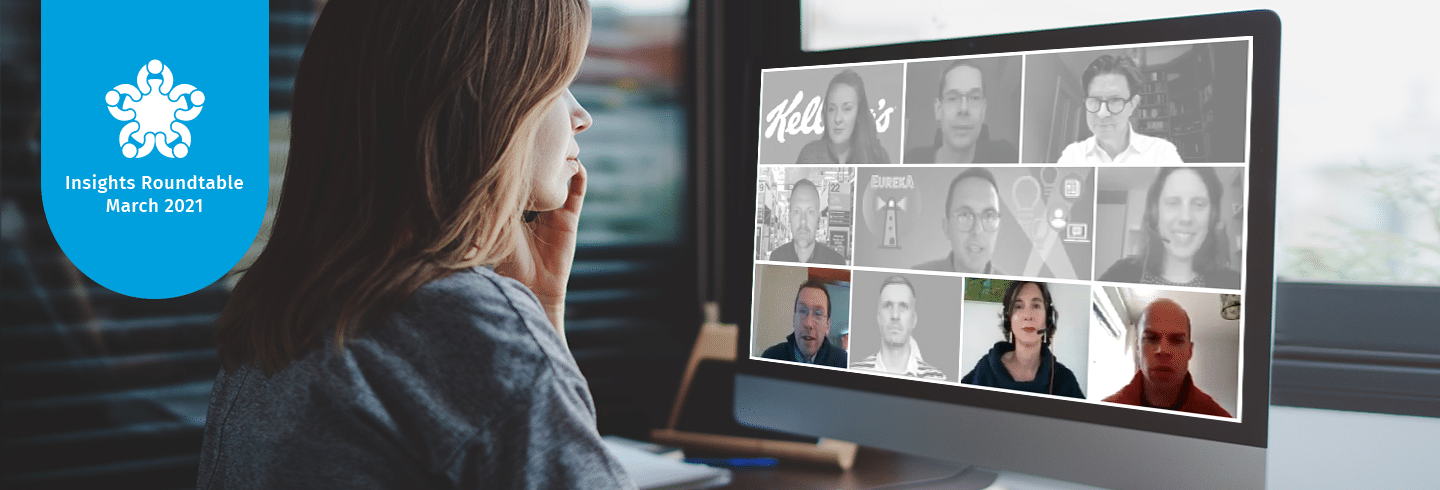Too often the data and insights business managers need to solve problems and make strategic business recommendations are spread across disparate sources, bogged down by information silos inside teams, business lines, and platforms.
In 2019, Gartner reported that almost 90% of business managers said it was important to use data to make their daily market-facing decisions. The same study reported business managers consult four or more different data sources, including colleagues, market insights, direct customer interactions, customer experience, and analytics and intelligence teams.
And that’s just internal data sources. The report showed managers also consult external sources like Google, consultants, industry resources, and public blogs and media.
That’s why leaders came together at the Market Logic Insights Roundtable to talk about smart ways to bring all their sources together on one platform, so insights are at the fingertips of those who need them when they need them.
During our Roundtable, experts from Prudential, Dyson, and L’Oréal shared a common focus: the need to breakdown information silos, consolidate information across multiple teams, and facilitate collaboration and social engagement, all on a central market insights platform.
Accelerating digital transformation at Prudential
Digital transformation is top of mind for Prudential and pivotal for their competitive advantage. “Embracing technology is key to making sure we’re leaders in the life insurance space, and that internally we lead with insights,” said Keith Golembiewski, Prudential’s Director of Strategic Insights and Workplace Solutions.
Prudential’s “AiME” (Artificial Intelligence and Me) platform is centre stage in these efforts. The platform serves end users and contributors across 14 organizational units to support nimble decision-making and facilitate a “hub and spoke model, with two-way flows between all teams and business lines,” Keith explained, “so we can be smarter, investing and sharing within this system, to impact the overall business strategy.”
Keith shared that in the span of “just a couple weeks,” the insights team recently leveraged AiME’s vast resources to synthesize “more than half a million dollars worth of insights”—this allowed business teams to create and validate their strategy for their newly launched “Managed Advice” program.
A platform for collaboration across teams at Dyson
As the Senior Insight Manager responsible for Dyson’s “Searchable” insights platform, Tom Fitzgerald says his role is focused on making sure Dyson is getting full value from all its existing research, knowledge, and data. To achieve this, Tom says Searchable serves two purposes: first, to make better decisions by leveraging all the firm’s relevant insights and, second, to do it efficiently.
“We’re shifting focus to how we’re impacting decisions with the quality of information we serve, not just the quantity,” Tom explained. “It’s all very well having lots of reports and information on the platform, but to really deliver value, we wanted to summarize what we know about a topic from all of the different perspectives.”
Tom shared an excellent example: the COVID-19 hub they curated to present all Dyson’s knowledge on consumer behaviors through the pandemic. This reliable, up to date knowledge zone was “put together by 17 different people from all the different insights teams,” Tom explained.
Not only does the COVID-19 knowledge zone dissolve silos between insights held by Dyson’s 17+ diverse insights teams, but it also facilitates collaboration between the teams. “Keeping that hub updated regularly is an ongoing challenge that we meet through collaboration across the different teams within the knowledge zones,” Tom explained.
Breaking down knowledge silos at L’Oréal
When L’Oréal’s incoming CEO Nicolas Hieronimus saw an insights opportunity in his review of the company, he gave a clear direction from the top: break down knowledge silos across internal brand teams within the company. Julia Sahry, L’Oréal’s Global Consumer Insight Director, took the lead, launching L’Oréal’s Market-Logic powered insights platform “One Intelligence” a year ago.
Julia and her team started their journey to break down knowledge silos by mapping all the places where market-facing information resides. “We ended up with more than 60 different sources and SharePoints, each of them completely isolated, not sharing their information with the others,” she explained.
After choosing Market Logic, Julie and her team got to work and launched One Intelligence in February 2020 to 40,000 users—that’s half of L’Oréal’s employees.
Julia said it was “very important for us to make the knowledge accessible to anyone.” The objective was to fuel customer-centricity across the organization by enabling everyone to use the information to develop their products.
“We wanted a junior product marketing researcher and a Head of Country or even Head of Division to access exactly the same information,” Julia explained.
Q&A: Executive endorsements drive usage
In Q&A, panellists discussed the benefits of executive endorsements to drive their platforms’ usage. At the Grand Opening of L’Oréal’s platform, endorsements from the new CEO, Group VPs, Country Heads and CMI leaders around the world “made everyone at ease with sharing their knowledge,” said Julia.
Frank agreed that at Prudential, the executive endorsement was key to “lead by example, understand the value of insights, and build the muscle memory for our organization to say this is the way we should do business”. He argued that this was even more important to push the use of market intelligence downstream to frontline employees, for use in tactical work.
At Dyson, Tom said the Chief Commercial Officer was the primary sponsor for the Searchable platform and one of its strongest advocates: “That’s been a key part of really getting it embedded, something that people use widely on a weekly basis.”


